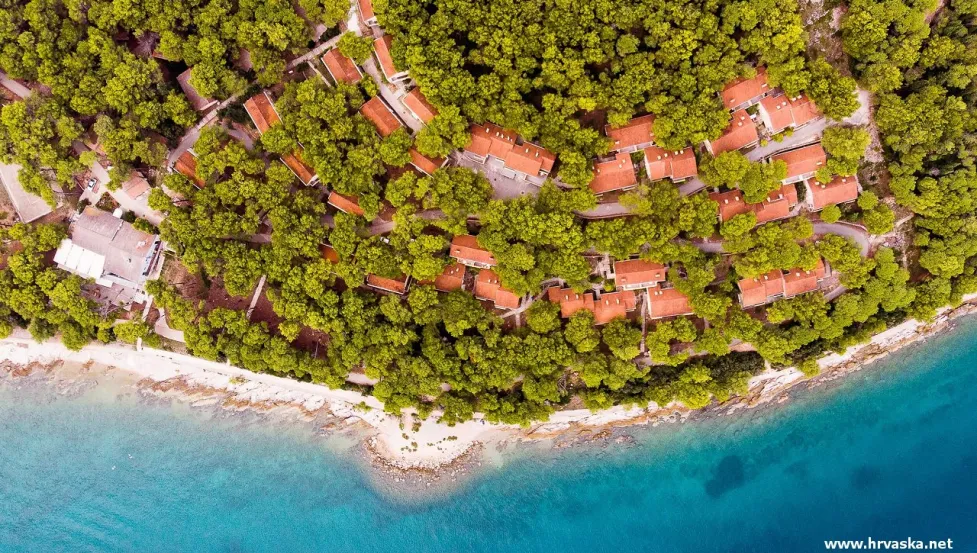Otok Šipan
Island Sipan, the largest of the Elaphite Islands, 17 km northwest of Dubrovnik; separated from the mainland coast by the Kolocepski Channel
Island Sipan, the largest of the Elaphite Islands, 17 km northwest of Dubrovnik; separated from the mainland coast by the Kolocepski Channel; area 16.5 sq km; population 500 (length 9.1 km, width up to 2.6 km). Two limestone crests, the higher (Velji Vrh, 243 m) in the northeast and the lower in the southeast surround a dolomite depression, on which olives, figs, vine, carob-trees, almond-trees, oranges and citrus fruit are cultivated.
Tourism occupies a special place in the economy of Sipan. The terminal, submerged parts of the valley form the cove of Sipanska Luka in the north-west, and the Sudurad Cove in the south-east. The small island of Ruda is off the south-eastern arm of the higher crest. Major places on the island are Sipanska Luka (Luka) and Sudurad; there are several hamlets in the island's interior (Fraiga, Sutulija, Vojnovo Selo, Odak). Ship connections with Dubrovnik.
The island was first mentioned under its present name in 1371. The ruins of a Roman villa have been excavated in Sipanska Luka. The island has several architectural monuments from the Middle Ages: the ruins of the St. Peter's church on Velji Vrh (11th c.), the small church of St. John with frescoes (11th c., expanded in the 15th c.) in Silovo Selo, and the pre-Romanesque church of St. Michael (11th c.) within the complex of the Benedictine monastery in Pakljena, a house with Romanesque and Gothic elements, a Gothic tower and the Renaissance church of the Holy Spirit from 1569. The Dubrovnik aristocracy built their summer villas on Sipan in the 15th century. In Sipanska Luka, with the late Gothic parish church of St. Stephen containing the paintings by Pantaleone (second half of the 15th c.), the summer villa of the Sorkocevic family (15th c.) stands out. In the 15th century the Gothic Duke's Palace with double windows on the front (and an inscription from 1450 above the Gothic gate leading to the yard) was built above Sipanska Luka. Sudurad has a fortified castle built by Tomo Stjepovic-Skocibuha in 1539; his son Vice erected a high tower (1577) by the castle.
The ruins of the summer residence of the Dubrovnik archbishops can be seen between Sipanska Luka and Sudurad, in which the humanist Lodovico Beccadelli (1501-1572) used to stay. The ruins of a small castle in which, a legend has it, the king of Naples Renato Anjou (15th c.) used to stay, are in Renatovo a coat of arms with the inscription Renatus rex justus has been found there.





